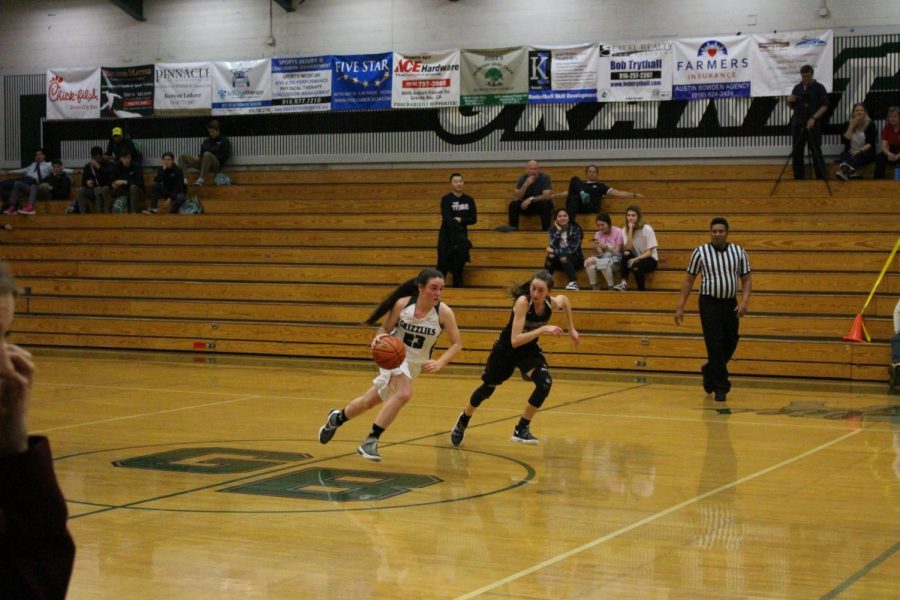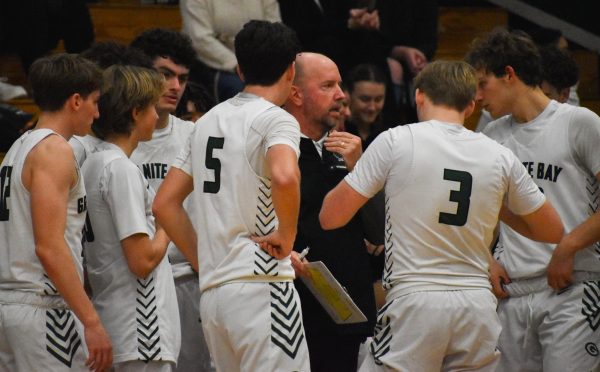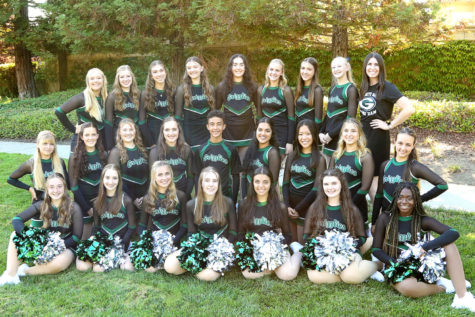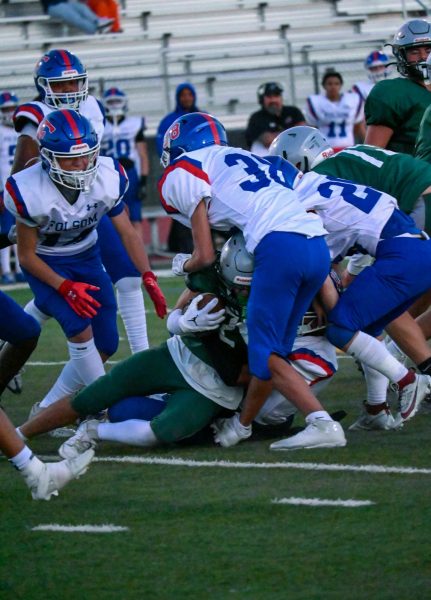Female athletics unappreciated
Athletes reflect on the lack of attention their sports receive
Being on either junior or varsity teams of any sport is a bonding experience with teammates, no matter the grade level.
Compared to men, women significantly face more bias in the workforce, school and athletics.
According to the Women’s Sports Foundation, only six to eight percent of total media sports coverage is devoted to [women’s] athletics, even though approximately 40 percent of sport and physical activity participants are women.
The lack of media coverage and fan turnout for female games can be attributed to people’s tastes and preferences and undesirable game times.
“Women’s sporting events tend to be at earlier, less prime-time hours compared to males,” Colleen Vivaldi, a Granite Bay High graduate and athlete at American University said. “For some reason, male sports seem to get more attention and attraction with audience sizes and support. It makes sense to schedule boys’ games at the more hype times when more spectators can attend.”
Biologically, men remain on average to be larger and stronger than women – the deeply rooted trait has sparked the stereotype that men are more athletic than women.
I think our culture is based widely around male dominated sports – basketball, football, baseball – so the minimal recognition of women’s sports is ingrained into our society,” Adrienne Russell, a GBHS senior and female basketball player said.
Due to this stereotype, many sports fans tend to lean more towards men’s sports, rather than the women’s.
“I think female sports are vastly underrated and under-covered world-wide,” Vivaldi said. “ U.S. media culture only perpetuates this type of culture, which is unfortunate. Females should be championed and looked at as equal to their male counter-parts.”
The use of social media for the means of promoting a sports game is extremely impactful in today’s tech-filled world.
Almost all professional sports teams own a social media account. High school student sections in addition partake in the promotion of their own sports teams.
“Men’s games are widely more advertised so a lot more people know about them,” Russell said. “When the Tribe tweets about an upcoming game on a Friday night, they don’t even mention that the girls are playing at the same venue right before the boys.”
Kyle Sisco, one of the Tribe leaders here at GBHS, believes there is a gender bias pertaining to sports. However, prefaces his statement that there are understandable reasons.
“I think that they are just going to go off probable ticket sales,” Sisco said. “The games we try to promote are the games where the most people are going to go. Even though we do promote women’s sporting events, we look at college sports and see how those go, and the biggest sports are going to be men’s basketball and football.”
The lack of promotion for women’s sports in turn perpetuates the lack of public consumption – creating a destructive and endless cycle.
The government and schools alike have tried to remedy this issue by enacting laws like Title IX: where no person on the basis of sex be excluded from participation in, be denied the benefits of, or be subjected to discrimination under any education program or activity receiving Federal financial assistance.
“Concerning basketball games on Friday night, the change was made a couple of years ago to create a Friday night double header so both genders could experience the excitement of a Friday night game,” Jason Sitterud, the GBHS men’s varsity basketball coach said.
In hopes of eliminating gender biased game times, the basketball team adopted a system that was meant to create an equal atmosphere.
The issue however remains prevalent in today’s society, and the only question left is when will it change?
“From what I have seen, there has been growth in the participation and support of women’s sports, both locally and across the country, and it will only continue to grow,” Sitterud said.

Sidney is a senior at Granite Bay High School who is in her third year on the Gazette/GraniteBayToday.org staff. She is one of five co-editors-in-chief...








![A group photo of all students who came to STN at the first Cinefest of STN were they showed films that other schools did for some of the competitions.
"[my favorite moment was] crazy 8 or cinefest or socializing." Elliana Montez a freshman at GBHS](https://granitebaytoday.org/wp-content/uploads/2025/03/CgHlLzxuCLXTL8GUeOFSXTK2JFtSMxUFrH6bnLcM-600x450.jpg)




